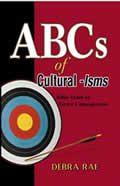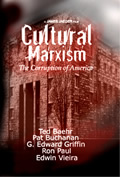ISLAMO-PHOBIC?
THINK AGAIN
PART 1
By
Debra Rae
August 27, 2011
NewsWithViews.com
Cultural Lessons from Girls of Riyadh and Kuwait
Recently I read a fascinating book unlike any other. Translated into English from Arabic, the Girls of Riyadh compiles a series of emails written by a young Saudi Arabian woman who, at the time of the book’s release, was in Chicago pursuing an endodontic degree.[1]
At the same time the author’s portrayals of her peers are culturally predictable, they are likewise disarmingly surprising. Author Rajaa Alsanea cleverly applies her keen sense of humor and incredibly insightful observations to delightful tales of girlish antics. Within the context of Riyadh’s societal and cultural mores, each girl’s story captures the imagination of readers from the East—and the curiosity of those from the West.
A Worldview “Better Felt Than Telt”
As a woman, I am intrigued by accounts of these girls’ romances, coupled with their remarkable achievements in academia, not to mention their notable career aspirations. I am further moved that sincerely held religious convictions guide every aspect of their lives. Moreover, in reading these published emails, I’m reminded of my own youth.
You see, from 1971-1973, I taught at the American School of Kuwait and, in the summer of 1974, I tutored the Kuwaiti Head of Parliament’s daughter in preparation for her freshman year of college. This young lady was on her way to the United States, and my job was to school her in colloquialisms and to increase her English vocabulary. To that end, I was invited into her life at home, at work, and at play.
Coupled with Alanea’s portrayals of girls of Riyadh, my experiences with girls of Kuwait demonstrate how a defined worldview shapes popular culture, education, economies, and geo-political policies enforced by leaders. For this reason, those already invested in a worldview do well to reflect upon that view’s reach and impact, particularly how it relates to competing or clashing ones. Unfortunately, too many among us choose instead to remain ignorant.
Failing to grasp worldviews vying for supremacy in our changing times, the un- or mis- informed fall prey to winds of change that are certain to set their vessels adrift. Effective dialogue between East and West depends on knowledge. It’s for this reason that I share simple, but crucial lessons I’ve learned from rare glimpses into the ordinary lives of affluent young women of Islam. To these, I add accounts of extraordinary experiences of ordinary Americans when Islamic philosophy and methodology are imposed on them against their will.
Not the Western Way
Set apart by her uncommon background, Alsanea invites readers (both “ladies and gentlemen”) to join her as if she were a tour guide to a new world, one “closer than what you’d imagine.” Her expressed task is to provide the inside scoop of conservative Islamic society as experienced by privileged young Saudi women. Escapades of the clique of girl friends she introduces demonstrate how some Muslim women are beginning to carve out their own way—a reformed way, yes, but not the Western way. Alsanea makes this point very clear.
Keep in mind that “reform” in the Muslim world means something entirely different to Muslims from what it means to infidels—i.e., non-Muslims. To Asanea and her peers, liberated womanhood rests somewhere in between contemporary Western society and sharia.[2]
I repeat: It’s not the Western way. Even girl friend Michelle, whose maternal family is as American as apple pie, returns “home” to Saudi Arabia from her “visits” stateside. The faith of her father beckons Michelle back to her Islamic society largely veiled from Western view.
The Girls of Kuwait
Also among the affluent upper class, my Kuwaiti student was confident, outspoken, and curious. Myself only twenty-five years of age, we weren’t much distanced in age. Though I was her teacher, she came across, in many ways, as “older” (certainly more aggressive) than I.
Budding Women of Islam
Reading Girls of Riyadh refreshed my recollections of this young lady’s group of Kuwaiti girl friends, whose everyday lives were akin to those of the Riyadh girls. Though decades distanced the Saudi clique from their Kuwaiti counterparts, their experiences as Muslim women were more similar than not.
First hand observation of contemporary desert life, framed by seventh-century Arabian culture, intrigued me in the 1970s, and all the more today. Whether in Riyadh or Kuwait City, a Muslim woman’s lot in life is defined by nonnegotiable religious restrictions. While upper class Gulf women study hard and subsequently receive advanced education degrees, they remain under the thumb of a decidedly patriarchal system.
Marrying well (and successfully) tops the list of “to dos” for a dutiful Muslim woman. Muhammad referred to women as man “toys”; and hell, he warned, is replete with ungrateful women who had failed to please their husbands. If that’s not enough, a man’s testimony in courts of law carries the weight of two women’s testimonies, and women in strict Islamic states may not drive or vote.[3]
Separation of the Sexes
Toward the close of my summer employment in 1974, I was invited to a traditional graduation party for my Kuwaiti student and, in a very unique way, gained access to a privileged world unknown to most.
A Westerner unencumbered by limitations, as these, I eyed with great curiosity the scores of young Kuwaiti women who attended that graduation celebration to which I was invited decades earlier. Once out of the public eye, these lovely girls shed their abiyas to reveal an astonishing array of the latest European designer fashions.[4]
Musicians were the only men allowed, but judging from the flashy, form-enhancing attire of these voluptuous young women, one would think their sole charge was to attract and hook a man! Suffice it to say, once a girl is earmarked for marriage, she is further immersed in training to perfect “the art of seduction,” which, I learned, is already very well developed by her teens.
Each Kuwaiti girl in attendance was lavished in jewels (no dime store imitations!). Sculpted hair and exotic make-up mirrored—but preceded and exceeded in sophistication—the Designing Women style of America’s 1980s. What author Rajaa Alsanea characterized as her “signature, shameless, crimson-red lipstick” painted the lips and fashionably formed fingernails of my student and her peers.
Competition and Jealousy
As the evening progressed, each guest was compelled, one after another, to take the dance floor (what appeared to be a long hallway down the center of the room) and “strut her stuff,” as if reenacting an old fashioned “cake walk.” Among onlookers were moms, known humorously as “capital funds and mothers of sons,” who checked out each beauty for suitability as a potential bride for their sons.
Assuming the posture of Paris runway models, guests took their turns while huddled onlookers chattered among themselves. To the best of her ability, each girl averted “the evil eye” which, if directed her way, bestowed bad luck (or so she thought). Even so, each dancer’s bloodline, family wealth, and status were as freely denigrated as her physical appearance. What the girls refer to as “Satan’s evil whisperings” could be downright brutal—e.g., She’s too fat, has a big nose and/or an ugly dress. So-and-so’s prettier, etc.
As with the Saudi girls, so it was with girls of Kuwait. Though highly competitive and openly critical of one another, they clearly enjoyed lifelong friendships marked by genuine affection. Shill trills (similar to wild West warrior whoops) were interjected periodically as if to say, “Way to go, girl friend!” These were interspersed with “pep” chants—i.e., “a thousand blessings and peace be upon you, beloved of Allah, Muhammad!”
When it came my turn to take center stage at this graduation shindig, I stood to my feet, headed down the runway, and immediately felt the sting of buzzing gossip. Once my gig was up, the girls praised my “beauty and grace.” Of course, I recognized that these young women had surely noticed my dress wasn’t a designer original, nor were my “jewels” museum quality. Admittedly, my dance moves were iffy; nevertheless, to my credit, I competed well in the “big hair” department. It was, after all, the seventies!
Superstition and Fate
No big surprises here: Girlish competition and jealousies are typical of all teens, especially among the affluent. However, it puzzles me that, no matter how sophisticated and educated they are, girls of Riyadh and Kuwait succumb to superstition. Ouija boards answer their questions, and personal fortunes are sought out through “readings” of coffee grounds and tealeaves. Even when referenced nonchalantly, as if only in fun, signs of the Zodiac weigh heavily in predicting success of soon-to-be-arranged marriages.
“Fate” likewise drives the Eastern mind. While a resident of Kuwait, I observed that some Muslims seem to think as follows: “If I live, I live; if I die, I die. Whether or not I conduct my affairs rationally, my plight in life rests solely in the hands of Fate. So be it.”
Predictably, the girls of Riyadh echoed this line of reasoning. One’s plight in love rests solely in the hands of Fate. So be it. At her wedding party in Riyadh, for example, the bride’s friends moaned, “The Prophet Muhammad used to send up prayers for the unlovely ones; and now the ugly ones seem to be in demand these days, and not us.” That’s just the way it is. Bummers!
East is East, and West is West
Perhaps more entertaining than anthropomorphically relevant, our girls of Riyadh nonetheless have much to teach us about Islamic culture and faith. I accept that today’s ever expanding “social media” shows Eastern kids to have much in common with their Western counterparts in growing up, schooling, relating, loving, and finding their way in our increasingly complex world.
Rightly so, modern Saudi women perceive themselves as catalysts for reform; but they do not look to the West for definition. Once again, I emphasize that the “new way” they’re pioneering is not the Western way. For us to imagine otherwise is unfounded.
| Subscribe to the NewsWithViews Daily News Alerts! |
Privileged Saudi women appear far more interested in becoming excellent doctors, dentists, and journalists than they are in “wiping Israel off the face of the Earth.”[5] I’m guessing that, once they come of age, these ladies would rather “make love, not war.” But make no mistake. Hollywood may tickle the fancies of ‘tweens, teens, and twenty-somethings but, in the end, Islamic culture will not be overturned. Nor will the mission of Islam be thwarted. Not by these lassies anyway.
The good news is that a large majority of Muslims, despite gender, distance themselves from radicalism.[6] Problem is, if only a tiny percentage of a huge population endorses Wahhabi extremism, the threat posed is monumental and mustn’t be airbrushed in the name of “Let’s all just get along.”[7]
More to follow in Part 2.
Click here for part -----> 1, 2,
Footnotes:
1.
Rajaa Alsanea. Girls of Riyadh. (London: Penguin Books, 2005).
2.
Sharia is the restrictive code of laws and rules that govern the life
and behavior of Muslims. Based on the Qur’an and Sunnah of the
Prophet Muhammad, sharia references “a path or way to a water
hole in the desert.”
3.
David Wallechinsky. “The10 Worst Living Dictators.” Parade
Magazine (February 16, 2003): 4.
4.
Abiyas are black “tents” (modesty coverings) worn by Gulf
State Muslim women while in public. Abiyas do not replace, but rather
overlay “street clothes” (deemed appropriate only in privacy).
5.
Islam
and antisemitism
6.
Quran (2:191-193).
7.
Without doubt Islam is the largest non-Christian religion in the world,
and some fifteen percent of all of the world’s 1.3 billion Muslims
sympathize with extremism. Spokesperson for the military wing of Hamas
in Gaza admits: “Our people love death.” Furthermore, he
adds, “Our goal is to die for the sake of God; and if we live,
we want to humiliate Jews and trample on their necks."












 Share
This Article
Share
This Article






